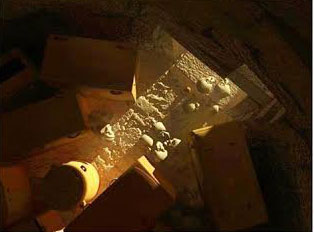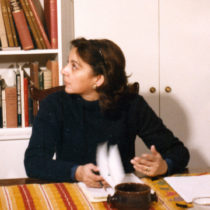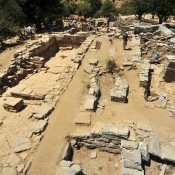On Friday 21 February 2014, at 18.30, in the framework of the Minoan Seminar, Constantinos Papadopoulos (Archaeological Computing Research Group, University of Southampton, UK) will give a lecture entitled “The contribution of Digital Reconstructions to the study of archaeological evidence from Minoan Crete: case studies from Archanes–Phourni and Zominthos”
Since the mid-80s, digital images have been used for the presentation of archaeological information. The development of new technologies led to the impetuous use of digital tools for data visualisation. Since then, numerous three-dimensional representations of archaeological sites and artefacts have been produced, which are often seen as end in themselves. As a result, the archaeological information and the research questions are hidden behind the image. The discussion regarding the production of digital reconstructions is usually focussed both on the technological fetishism and the power of the images that often present a single—photorealistic— truth creating wrong impressions and interpretations. On the other hand, the potential of digital images have been shyly discussed especially in comparison to the discussion of their problems. It is only in the last years that 3D digital reconstructions have been used as tools for formal analysis: visibility, accessibility, structural integrity, lighting studies etc.
This presentation will examine case studies from Minoan Crete, looking beyond the image and discussing the potential of digital reconstructions as tools for the study, analysis and interpretation of archaeological data. Particular emphasis will be given to the simulation and analysis of illumination in different environments, discussing its role in past everyday activities. Specifically, the digital reconstruction of burial buildings from Phourni, Archanes, along with recent studies that link tombs’ orientations with sunlight and/or moonlight will facilitate the discussion regarding the role of natural and artificial illumination in burial structures, examining light’s functional and possibly supernatural role in the perception of life and death by the living. Lastly, the digital reconstruction of Room 13 at Zominthos, which has been interpreted as a ceramics workshop, along with an illumination study, as well as archaeological and ethnographic research, will aim at revisiting the initial interpretation and discussing the possible uses of that space.
Although the past cannot be reconstructed, the examination of the above case studies from Minoan Crete will highlight that careful use of digital technologies can lead archaeology to new avenues of research, providing new data, hypotheses and interpretations, answering complicated research questions and approaching the past under a new light.
The talk will be given in Greek accompanied by a PowerPoint presentation in English.
Venue: Archaeological Society, Panepistimiou 22, Athens




